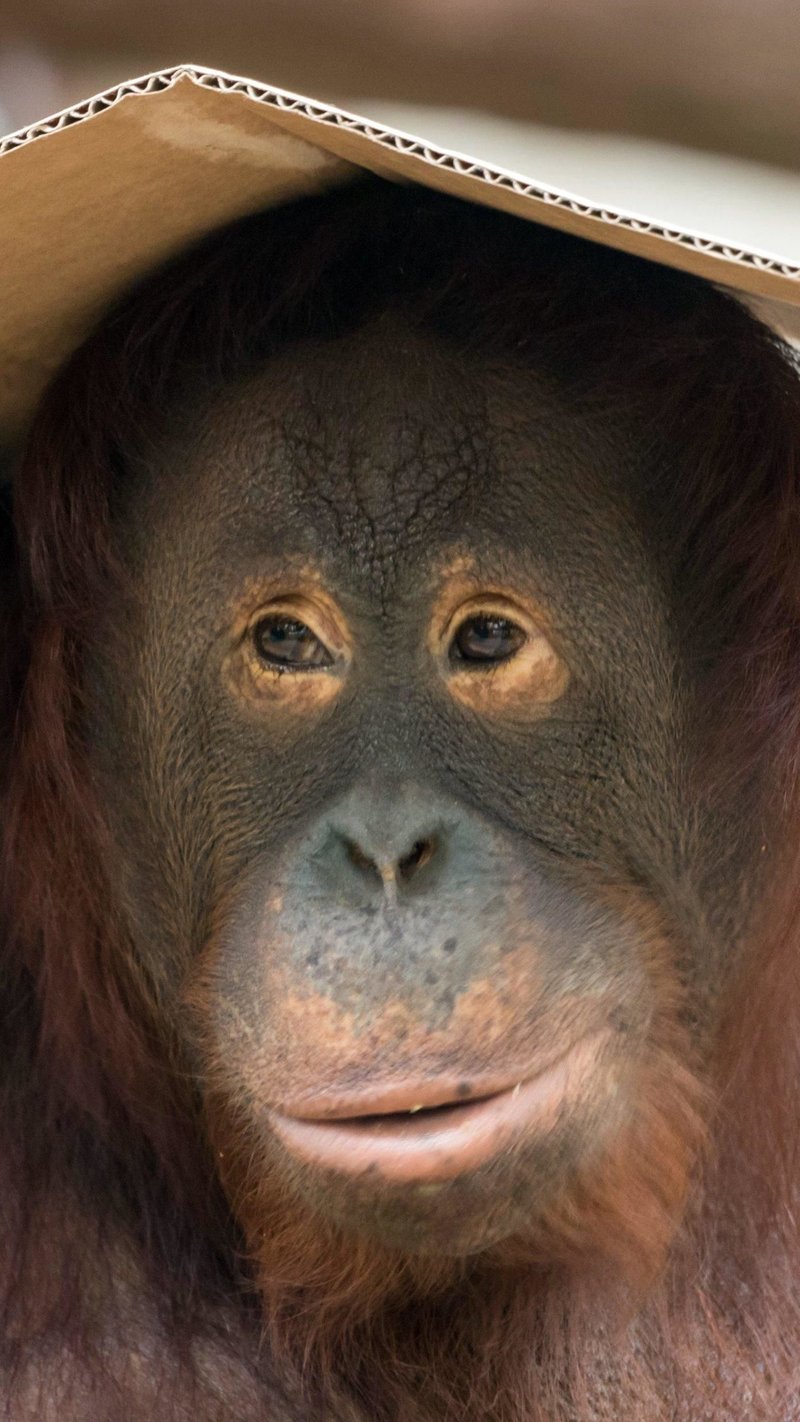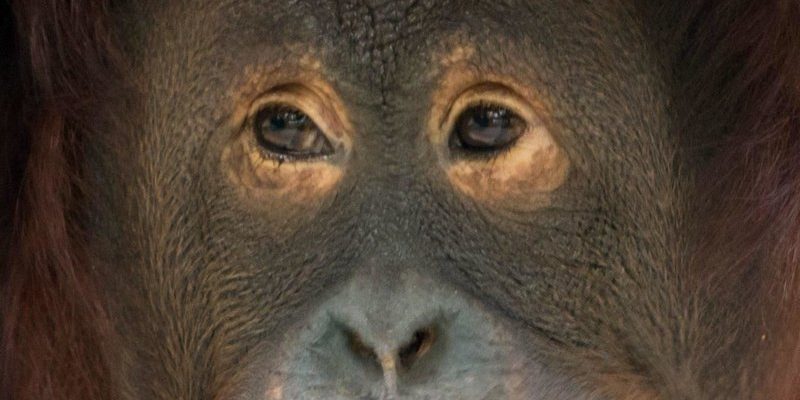
In this article, we’ll explore ten animals that have some similarities to orangutans. You’ll learn about their unique traits, habitats, and how to spot the differences among them. Whether you’re a nature enthusiast or just curious about these wonders of the animal kingdom, I promise you’ll find something intriguing. So, grab a cup of coffee, and let’s dive into this captivating world!
1. Chimpanzee
Chimpanzees are often the first animals that come to mind when we think of orangutans. Like orangutans, chimps are great apes and share about 98% of their DNA with us humans! Both species are highly intelligent, social creatures that live in trees, but there are key differences between them.
Chimpanzees have a more robust, muscular build compared to the orangutan’s slim, elongated form. While orangutans are primarily solitary, chimps are incredibly social and usually live in large family groups. You can often see them playing, grooming one another, or even sharing food. This social structure is key to their survival, as they work together for protection and foraging. If you ever spot a chimp swinging through the trees, you’ll notice that their movements are quicker and more energetic than an orangutan’s deliberate pace.
2. Bonobo
Speaking of chimps, let’s talk about bonobos! These intriguing animals are often referred to as the “smaller cousins” of chimpanzees. While they share a similar habitat and social structure, bonobos tend to be more peaceful and matriarchal compared to their chimp relatives.
Like orangutans, bonobos are also great apes, but they have a more slender build and darker faces. One key difference is their behavior; bonobos often use sexual behaviors as a way to resolve conflicts, which is quite different from the orangutan’s mostly solitary lifestyle. If you ever see a bonobo, you’ll notice their playful nature is more pronounced—think of them as the fun-loving party guests at the family reunion!
3. Gibbons
Also known as “lesser apes,” gibbons might not be as widely recognized, but they share some fascinating similarities with orangutans. With their long arms and agility, these small apes are acrobatic climbers—perfect for life in the treetops.
One major difference is size; gibbons are much smaller than orangutans. They also live in small family units and are known for their beautiful singing, which can often be heard echoing through their forest homes. If you happen to catch a gibbon in action, you’ll see how gracefully they move from branch to branch, almost like a ballet dancer leaping across a stage.
4. Gorilla
Gorillas are the gentle giants of the ape family, standing much taller and bulkier than orangutans. While both species are herbivores and primarily live in forests, their habitats differ. Gorillas tend to roam the ground more than orangutans do.
However, when you see a gorilla, you might notice some similarities, particularly in their facial expressions and social behaviors. Both species are caring parents, and gorillas also display strong emotional ties within their groups. If you ever meet a gorilla, you might be struck by the wisdom in their eyes—reminding you of the calm, thoughtful nature of an orangutan.
5. Spider Monkey
Now let’s swing over to spider monkeys! These creatures share the same forest habitat as orangutans and have similar long limbs and prehensile tails that help them navigate through trees.
While both animals are agile climbers, spider monkeys are more social, often found in large groups. Their playful nature and loud calls differentiate them from the more reserved orangutans. You might see a spider monkey displaying its acrobatics high above the ground, while an orangutan prefers a slower, more contemplative approach to their arboreal lifestyle.
6. Siamang
Siamangs are another type of lesser ape, closely related to gibbons. They’re known for their distinctive throat pouch that helps amplify their calls. Like orangutans, they inhabit dense forests and are arboreal—meaning they spend most of their time in trees.
What sets siamang apart is their vocalization. These animals are often referred to as the “singers” of the jungle, with their beautiful, resonant calls echoing through the treetops. If you hear a powerful, haunting melody in the forest, you might just be listening to a siamang serenade!
7. Tamarin
Tamarins, though much smaller than orangutans, share a few characteristics, especially in their social behavior. These tiny monkeys often live in groups, and like orangutans, they have strong family ties.
Tamarins are known for their colorful fur and lively demeanor. Unlike the mellow orangutans, tamarins are active and playful, constantly exploring their environment. When observing a tamarin, you might notice how it interacts with its family members—it’s a lively scene that stands in contrast to the quieter, more introspective nature of orangutans.
8. Macaque
Macaques are one of the most adaptable primate species, found in various habitats across Asia. While they differ significantly from orangutans in terms of lifestyle and social behavior, both species are intelligent and capable of learning complex tasks.
Macaques are known for their social structures, often living in large troops. Unlike orangutans, which prefer solitude, macaques thrive in social settings, engaging in grooming and playful interactions. If you see a troop of macaques, you’ll likely witness their interactions, which can be both amusing and informative—showing the importance of bonding and cooperation in their survival.
9. Capuchin Monkey
Capuchin monkeys are famous for their cleverness and adaptability, often seen in popular media. They’re known for their intelligence, using tools and solving problems—traits they share with orangutans.
However, capuchins are much smaller and have an energetic nature, often seen jumping from branch to branch. Their social dynamics differ too; they typically live in larger groups, forging strong bonds with one another. When you compare the social behaviors, you’ll see that while both species are intelligent, capuchins are much more active and playful in their interactions.
10. Squirrel Monkey
Last but not least, let’s talk about squirrel monkeys. These little guys are lively and energetic, much like capuchins. While they don’t share the size or strength of orangutans, they do share a tropical habitat and a love for climbing.
Squirrel monkeys are known for their bold personalities and social structures, often seen playing and grooming each other within their troops. In contrast, orangutans tend to prefer solitary living. If you ever get a chance to watch a squirrel monkey, you’ll notice how their exuberance shines—a stark difference from the more laid-back nature of the orangutan.
In conclusion, while orangutans stand out as unique creatures in their own right, they share the stage with an interesting cast of primate relatives. Each animal is a beautiful reminder of the diversity of life on our planet. Whether it’s the familiar chimp or the acrobatic gibbon, these animals provide insight into the fascinating world of primates. Next time you find yourself pondering over these incredible beings, you’ll remember they’re all part of a larger family tree—each with its quirks and charms that make them special.

